List of Degree of Adjectives in English Definition, Infographics and PDF GrammarVocab
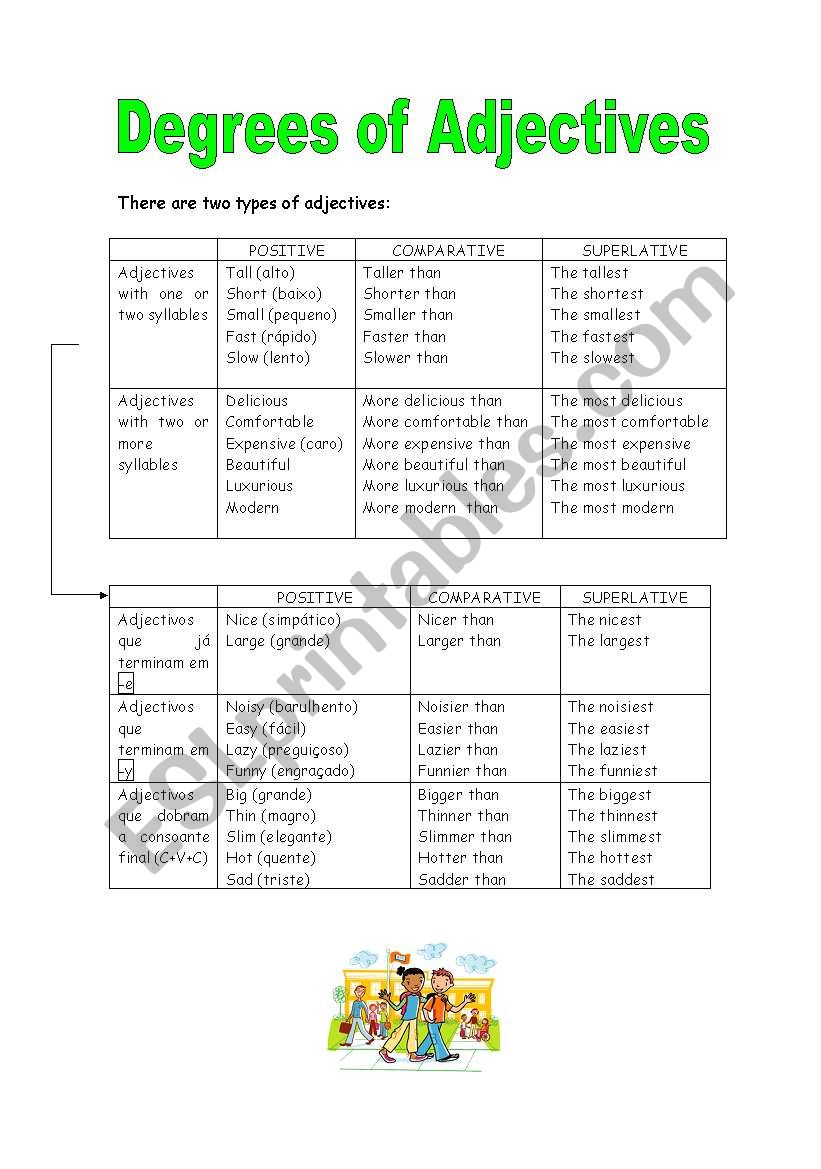
Degree Of Adjectives Worksheet For Students F33
The three degrees of adjectives are: Positive degree: The positive degree of an adjective is the simplest form, used to describe a quality without any comparison. It is used when no comparison is made between two or more things. For example: "She is a talented singer." "He has a big house."
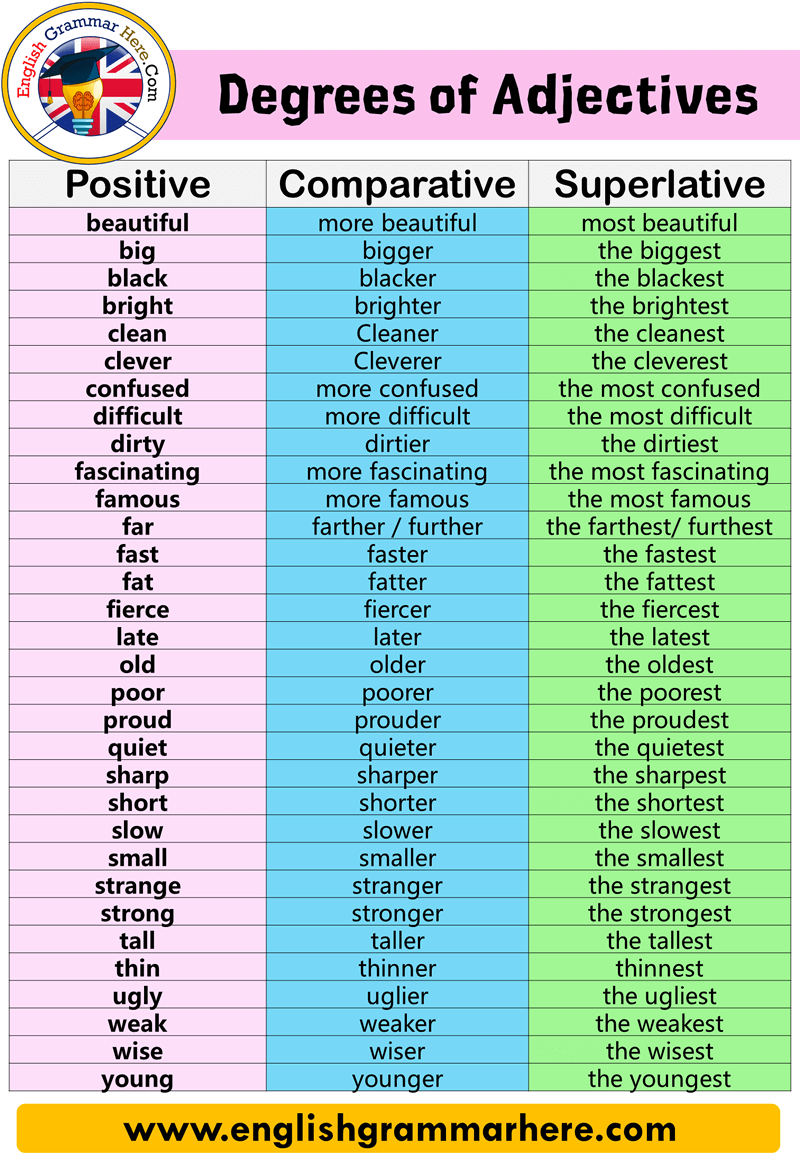
Degrees of Adjectives, Comparative and Superlative English Grammar Here
Adjectives have their own degrees called degrees of adjectives or degrees of comparison that compare one thing/person to another. Adjectives have three degrees of comparison - Positive degree of adjectives Comparative degree of adjectives Superlative degree of adjectives Degrees of Comparison examples: Positive degree - The cat runs fast.

Degrees of Adjectives YouTube
An adjective is a describing word that modifies or evaluates the purpose of a noun or pronoun by adding specific attributes to it. Degree refers to the intensity, comparison, or superlative quality of an adjective. It enables us to compare and contrast various entities or describe something in relation to others.

English Degrees of Comparison 100 Examples An adjective is a word which modifies a noun or
Rule 2: While writing a sentence in the comparative degree, the word 'than' is used after the adjective. hence, the structure of the adjective in the comparative degree is "adjective + er + than". For example, Don is taller than his father. Rule 3: Adjectives for the Same Noun.
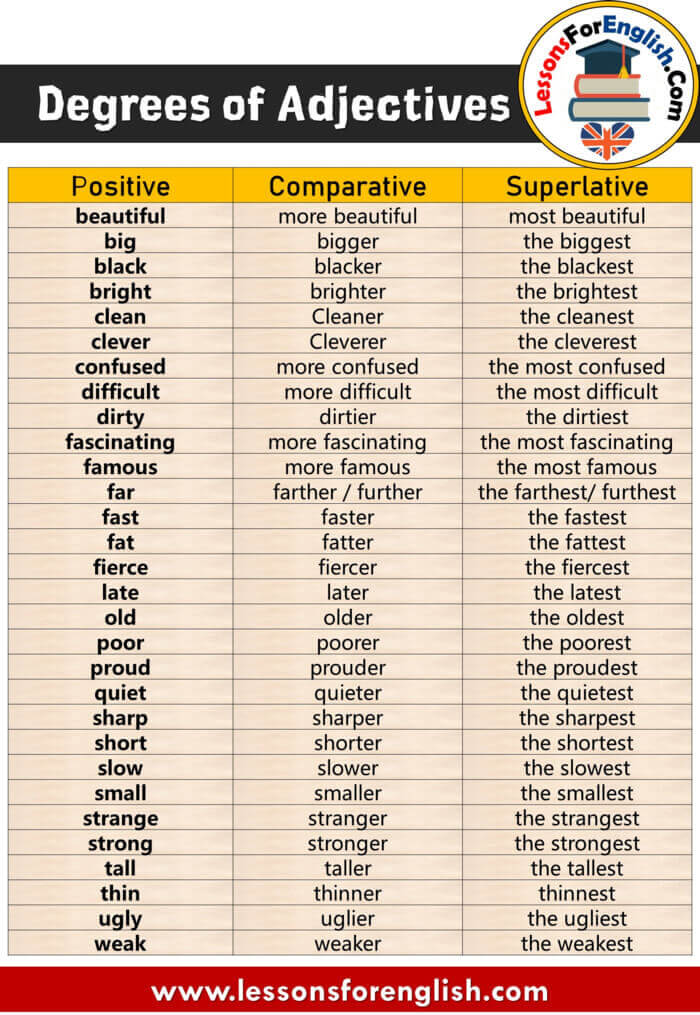
Degrees of Adjectives List in English Lessons For English
Every adjective has its three degrees. Positive Adjective Comparative Adjective Superlative Adjective The degrees of an adjective express the intensity of an adjective in increasing order, e.g., big - bigger - biggest, good - better - best. Examples: Use of Comparative Adjectives

Worksheet On Degrees Of Adjectives Free Printable Adjectives Worksheets
1. The Positive Degree The positive degree of an adjective makes no comparison. A tall building. She runs fast. This is a beautiful car. 2. The Comparative Degree The comparative degree compares two people, things, actives, or qualities. A taller building than this one. She runs faster than I do. This car is more beautiful than yours. 3.
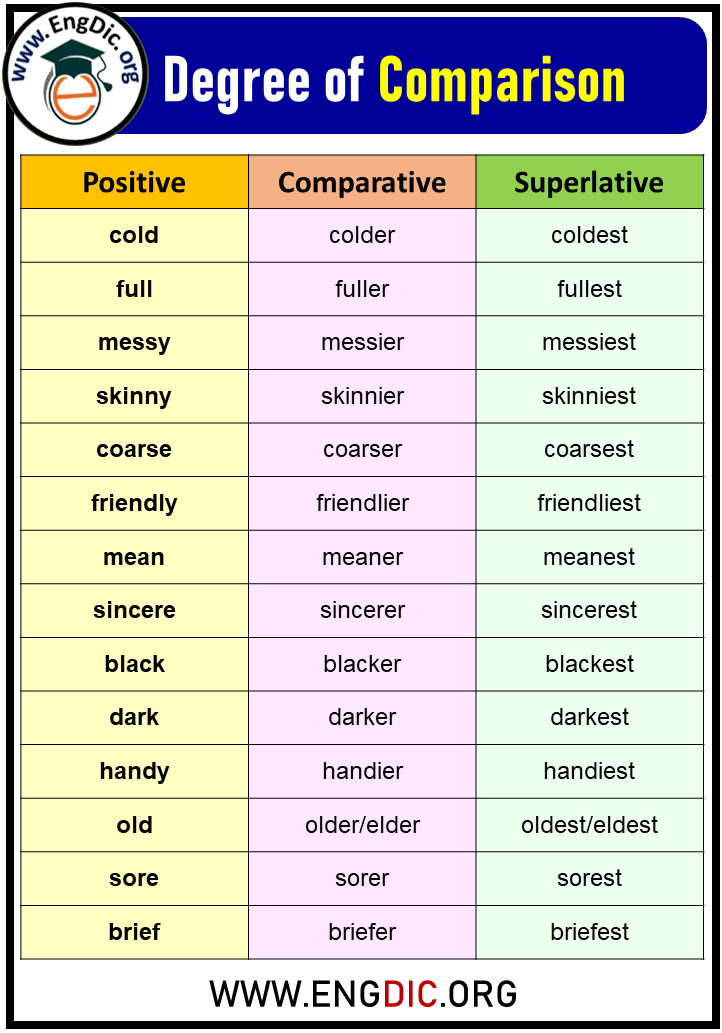
+100 Examples of Degrees of Comparison EngDic
Level: beginner Comparative adjectives We use comparative adjectives to show change or make comparisons: This car is certainly better, but it's much more expensive. I'm feeling happier now. We need a bigger garden. We use than when we want to compare one thing with another: She is two years older than me. New York is much bigger than Boston.

PPT ADJECTIVE PowerPoint Presentation, free download ID1753874
1. Most adjectives (usually single-syllable words) form their comparative degree by adding er and their superlative by adding est to the positive form of adjectives. For example. In the positive form, the adjective is High. In the corresponding comparative degree, the adjective will become Higher. In the corresponding superlative degree, the.

English Grammar What are the degrees of Adjectives Positive, Comparative Superlative Part
The three degrees of adjectives are : Positive degree Positive degree is the base of the adjective. It denotes the mere existence of a quality. Examples of Positive degree (1) Tina is wearing a red dress. (2) leopard runs fast. (3) The big dog chased the cat. (4) There are four pencils in the box. (5) She is a beautiful girl.

No gain without pain. Adjectives, degrees of comparison online presentation
Adjectives have three degrees that compare one thing to another, positive degree, comparative degree, and superlative degree. To describe, quantify, modify or identify nouns/pronouns, adjectives are used in specific conditions. Here are the three degrees of adjectives: Positive Degree Comparative Degree Superlative Degree Positive degree

Degrees of Adjectives, Definition, Positive, Comparative and Superlative Examples Adjectives
Degrees Of Adjective Definition: Every adjective has three degrees of its own. They are : Positive, Comparative, Superlative degrees. There are two types of Adjectives : Regular Adjectives Definition : Regular adjectives make their comparative and superlative forms by adding 'er' and 'est'. Degrees Of Adjective Examples In ER And EST.
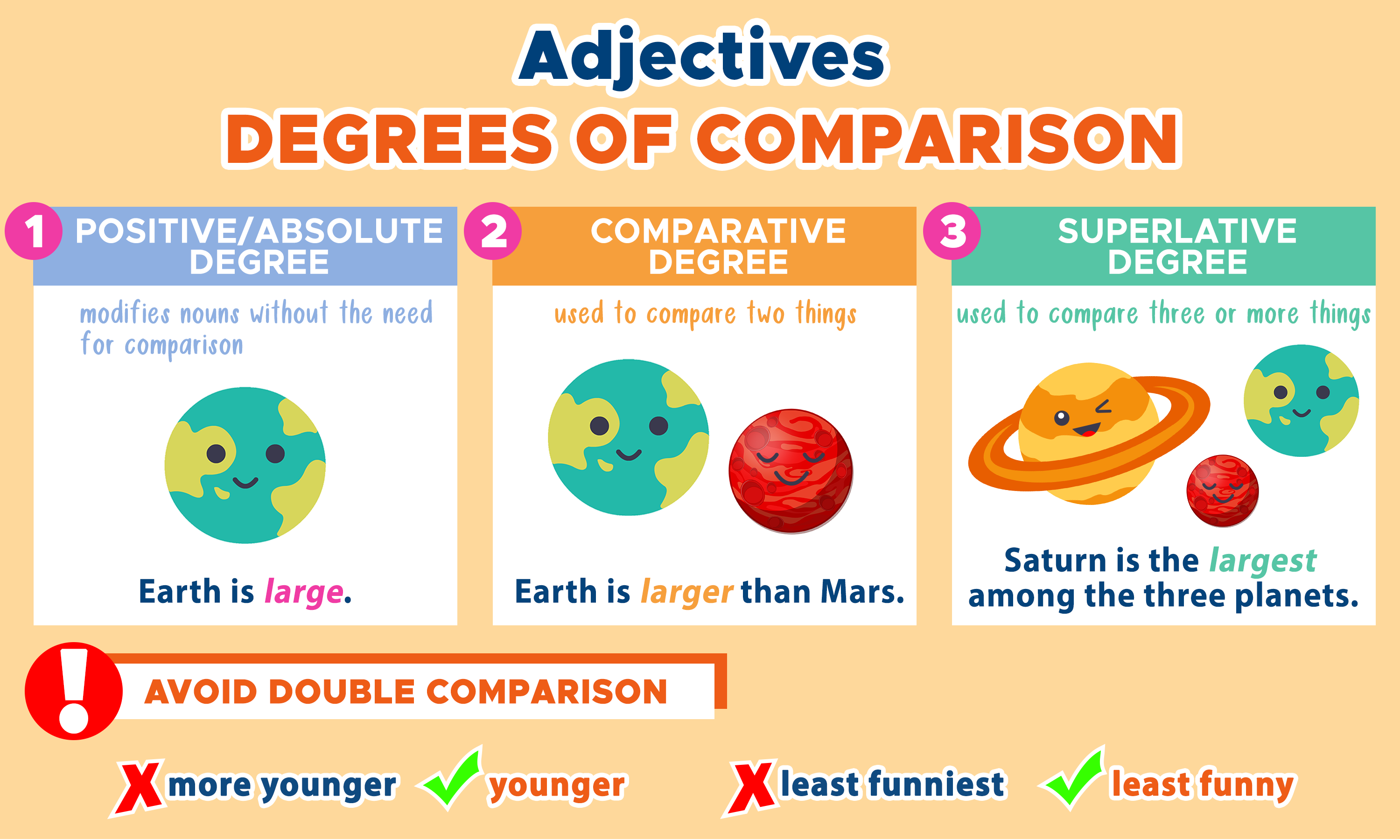
Degrees of Comparison Comparing Nouns Curvebreakers
Adjectives are words that describe the qualities or states of being of nouns: enormous, doglike, silly, yellow, fun, fast. They can also describe the quantity of nouns: many, few, millions, eleven. Adjectives modify nouns As you may already know, adjectives are words that modify (describe) nouns.

Types of Adjectives, Positive, Comparative and Superlative of Adjectives and Examples English
Degrees of Adjectives: Rules, Usage, List Examples & Exercises Adjectives Definition and Examples Irregular Comparison of Adjectives Superlative Adjectives Adjectives with -ly Termination Uses of Adjectives Indefinite Adjectives Degrees of Adjectives Comparison of Adjectives, Reference Guide for ESL and English Language Students

Degrees Comparison Adjectives Vector & Photo Bigstock
Degrees of adjectives are used to compare or show the intensity of two or more characteristics of different nouns or pronouns. There are three degrees of adjectives: positive, comparative, and superlative. Let's take a closer look at each degree:

Comparison of Adjectives and Comparison of Adverbs, Definitions and Examples English Grammar Here
In grammar, the degrees of comparison relate to adjectives and adverbs. Every adjective and adverb can be written in one of three degrees: The Positive Degree. This offers no comparison. It just tells us about the existence of a quality. For example: adjectives: slow, beautiful, happy adverbs: slowly, beautifully, happily The Comparative Degree.
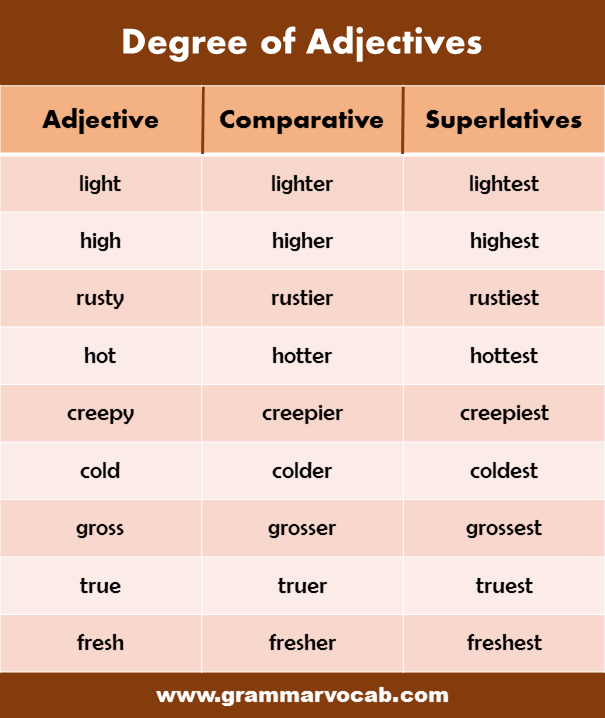
List of Degree of Adjectives in English Definition, Infographics and PDF GrammarVocab
10 questions. Take test. Comparison of adjectives is an important part of the English language. It helps put two or more things next to each other and express their relative degree. We use it to describe the differences between two objects, people, or ideas. The three degrees of comparison of adjectives are: positive, comparative, and superlative.